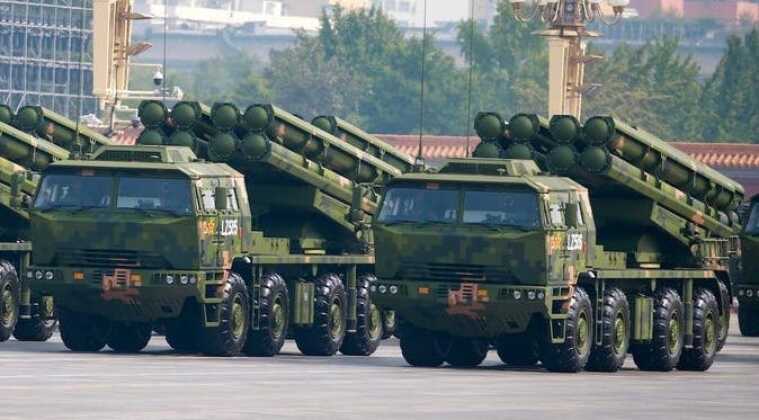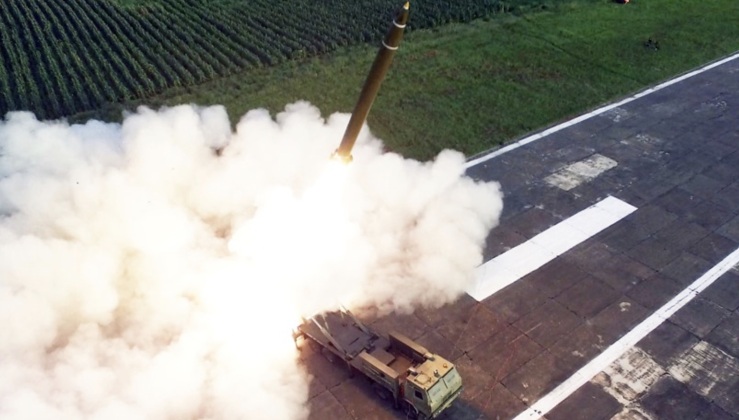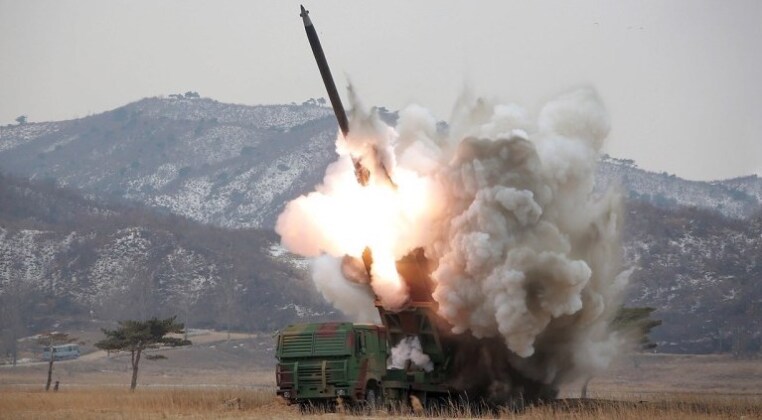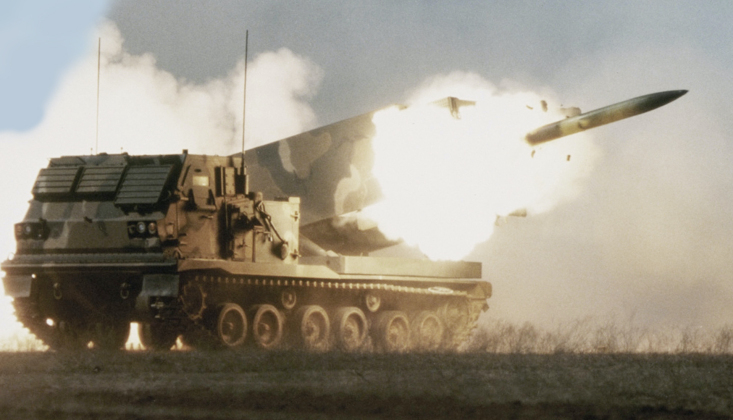News
These Are the World’s Five Most Dangerous Rocket Artillery Systems: War in Ukraine Shows Their Key Importance

Rocket artillery has since the Second World War provided an effective means of conducting long range bombardment beyond the reaches of guns of any calibre, and today allows armies to lay down fire more cheaply and usually at shorter ranges than ballistic or cruise missiles, albeit at a higher cost than howitzers. The systems have played key roles in multiple major conflicts, recently including the Syrian War and ongoing Russian-Ukrainian War, with the latter having seen protracted artillery duels become particularly central to its course while use of air power remains more limited. Investments in rocket artillery have varied widely, with some militaries seeing them as more useful to complement or compensate for weaknesses in other areas such as combat aviation, while others have seen them to have particularly significant tactical or strategic applications due to geography and the distances their forces deploy from enemy assets. With advantages in rocket artillery capabilities potentially playing key roles in several major hotspots, an evaluation of the five most capable deployed in the world today provides important insight into which parties are likely to enjoy an edge in the field.
PHL-16 – China
Entering service in 2019, the PHL-16 propelled China to leadership in the field of rocket artillery systems with the ability to deploy large 750mm, 370mm and 300mm rockets providing a tremendous maximum engagement range of 500km. The systems deploy from 8×8 wheeled mobile launchers, which form batteries of six launchers each and several reloading vehicles. Although China’s ground forces have remained a relatively low priority for investment, the PHL-16 entered service and achieved primacy as China’s top self propelled howitzer the PLZ-05A/PLZ-52 achieved similar significant performance advantages over its foreign counterparts. As a result China’s ground forces will benefit from a significant engagement range advantage for both major artillery types no matter which adversary they face.
Referred to by the director of the Asia Engagement at the Defense Priorities Lyle Goldstein as a “game changer,” with similar assessments being widespread, the PHL-16 is expected to be particularly useful in potential conflicts over the Taiwan Strait, the Korean Peninsula, and disputed border regions with India. The system places all of Taiwan within its engagement range from positions on the mainland, providing a less costly alternative for bombarding targets than ballistic or cruise missile strikes, and can also engage targets in the inter-Korean demilitarised zone without leaving Chinese soil.

KN-25 – North Korea
The KN-25 strengthened North Korea’s longstanding lead over its potential adversaries in rocket artillery capabilities, with its 400km range allowing it to bombard targets across South Korea from far behind friendly lines. Its extreme range remains longer than that of many ballistic missiles such as the Hwasong-5 and KN-02, with a 2020 U.S. Congressional Research Service report referring to it as a system that “blurs the line between rocket and missile” sporting “advanced avionics, inertial and satellite guidance systems, and aerodynamic structures.” The system entered service in parallel to new tactical ballistic missile classes such as the KN-23 providing an effective lower cost complement, and its supremacy reflects a longstanding North Korean emphasis on artillery and missile capabilities. The rockets are thought to have a 600mm diameter, and lack the versatility of the Chinese PHL-16 which can deploy rockets of multiple sizes. The KN-25 notably pioneered the first major use of six rotating rear fins, rather than spin stabilising rotation of the entire body, which is thought to increase precision by allowing guidance systems to function better. The system can fire at least three rounds per minute, and its launchers can reportedly also fire cruise missiles which was a capability first seen in 2021.

KN-09 – North Korea
Estimated to have entered service around 2014, the North Korean KN-09 for half a decade held the title of the world’s longest ranged rocket artillery system, with South Korean intelligence reporting an ability to strike targets 200km away. This represented more than double the range of competing South Korean and American systems, partly compensating for North Korea’s more limited ability to lay down fire from the air with a much greater reach from the ground. This remains key to ground forces’ ability to operate independently. The 300mm munitions are launched from 6×6 launchers which carry 12 rockets each. Their induction revolutionised North Korean rocket artillery capabilities, with preceding the late Cold War era M1985/M1991 system having under one third of its range and being at a disadvantage against the top U.S. and South Korean competitors. The system has seen significant improvements since it was first seen, including a 50 percent increase in the number of launch tubes and modifications to the transporter’s chassis. Satellite guidance has been widely reported, with guidance characteristics resembling those of the American M31 system and having no analogues in neighbouring China or Russia. The KN-09 provides a lower end counterpart to the KN-25 which can lay down fire more cheaply, with its range being sufficient to engage targets across much of South Korea including key U.S. bases.

9A53-S Tornado-S (in testing)
Approved for service in 2016 and ordered for the Russian Army three years later, the 9A53-S Tornado-S system may have seen combat during the Russian-Ukrainian War although the very limited numbers in which it is fielded have limited its ability to serve as a game changer with less than two dozen being operational. While far from outstanding with a range of just 120km, a new munition type for the system with a reported range of 200km began testing making it the first outside China or North Korea with such a reach. Whether war in Ukraine will accelerate development efforts, and lead Russia to expand production of the Tornado-S, remains uncertain but a significant possibility. Russian rocket artillery is prized for its ability to deploy a very wide range of projectiles, including fragmentation, cluster, HEAT and most notably thermobaric rounds – the last which provides a unique capability prized for its effectiveness in neutralising fortified positions. Whether 200km rounds will have similar versatility remains uncertain, but extending the range of thermobaric rounds to such ranges could be a major game changer with the value of such ammunition proven by operators of Russian rocket artillery in Syria, Iraq and most recently in Ukraine.
 M270 with ER GMLRS (in testing)
M270 with ER GMLRS (in testing)
The Cold War era M270 rocket artillery system currently serving in the U.S. Army has long been relegated to a very limited engagement range, although this is expected to improve significantly as the system is enhanced with a new munition type. The ER GMLRS began flight testing in March 2021 and is intended to provide a 150km engagement range. The rockets use larger motors, rely on tail-driven guidance and have newly designed airframes, with production expected to begin in 2023. The March 2021 launch reached only 80km, however, with the 150km target remaining a way off. The ER GMLRS will still only provide the M270 with less than a third of the engagement range of the Chinese PHL-16, and just 37.5% that of the North Korean KN-25, but would still represent a significant improvement for Western and NATO-compatible armaments which have fallen very significant behind in the field. A lower focus on artillery and greater emphasis on use of air power has been a primary cause of the shortcomings in their artillery and rocket artillery systems.












